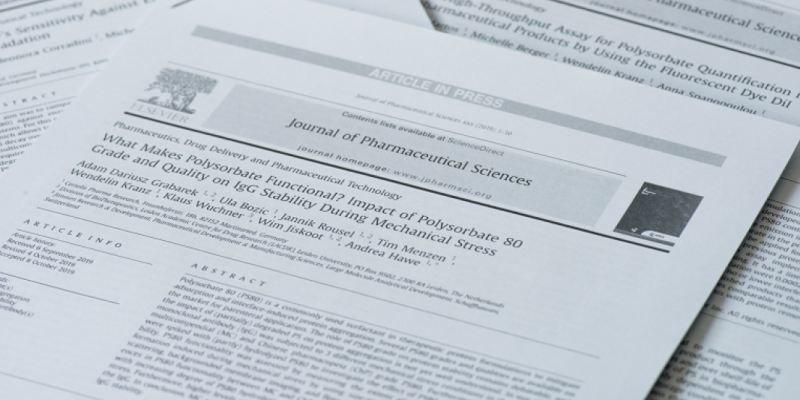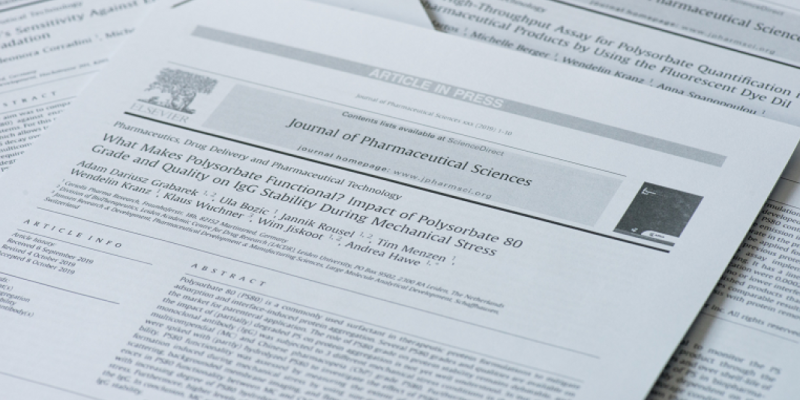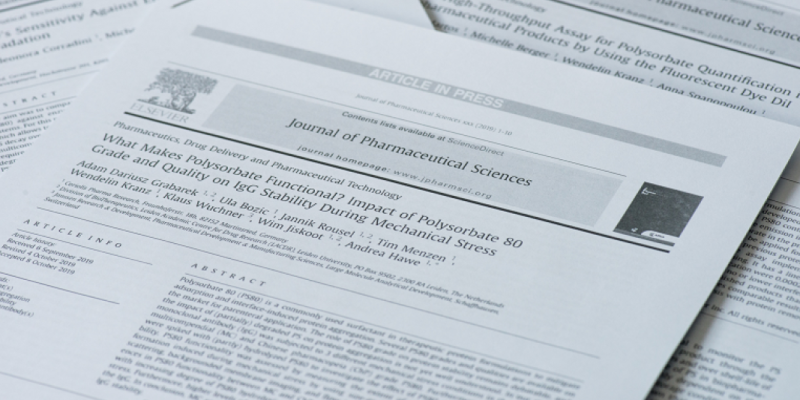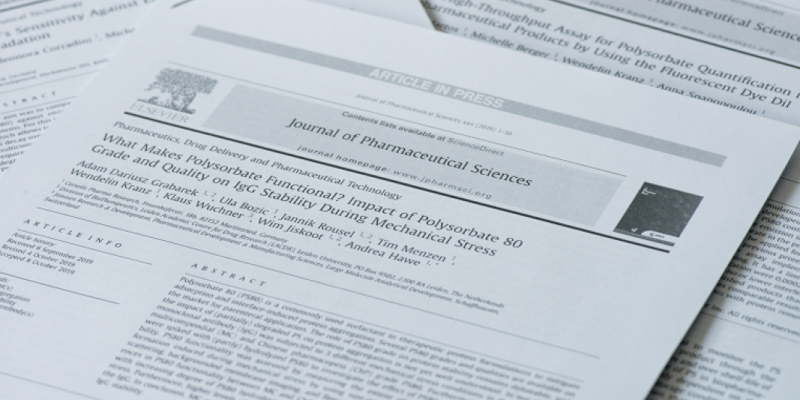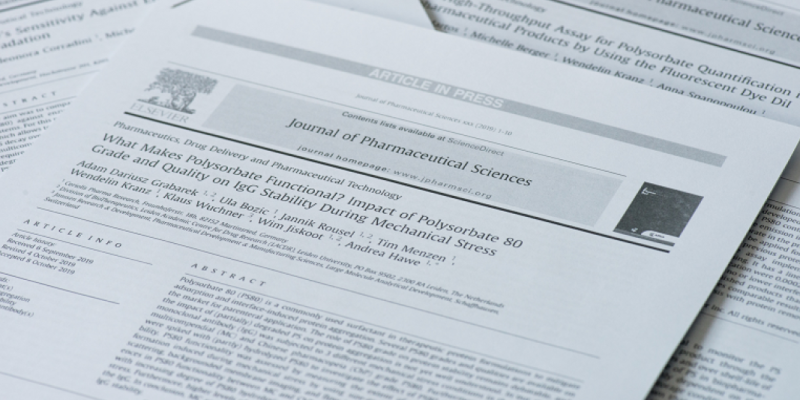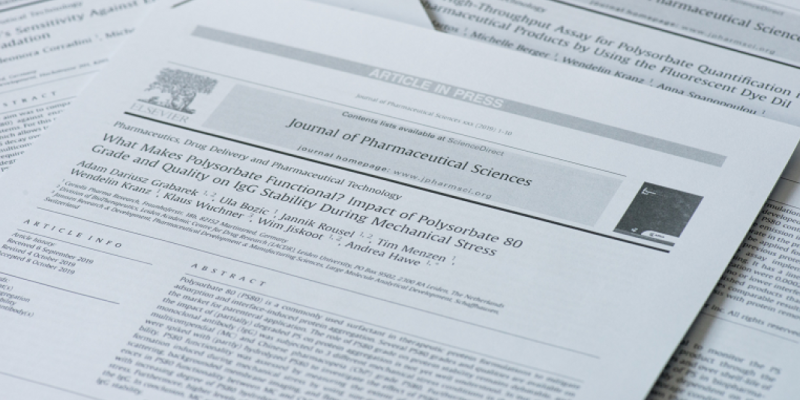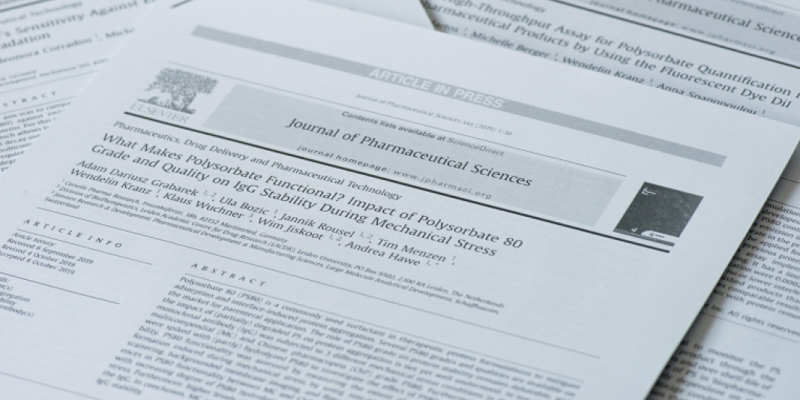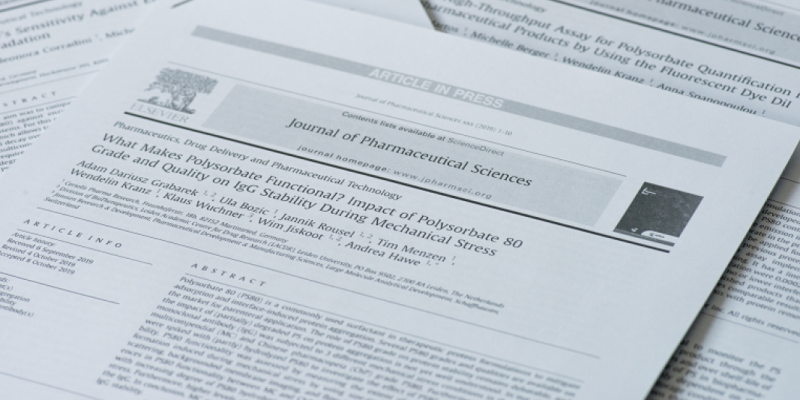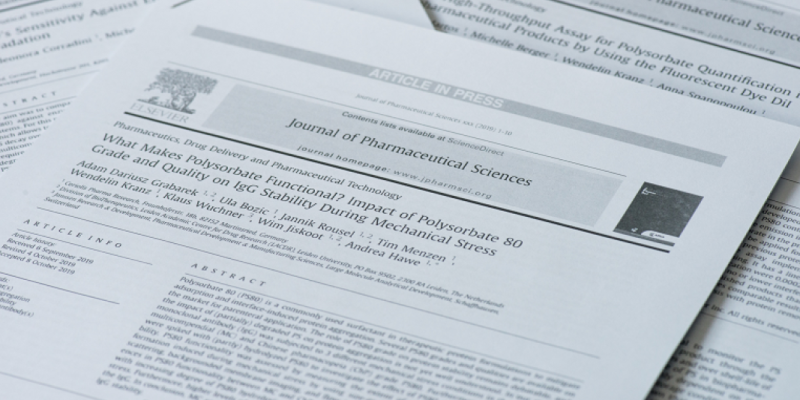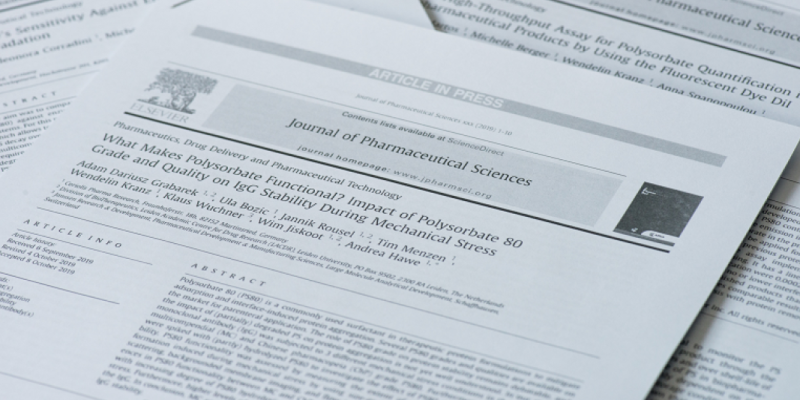Taylor dispersion analysis compared to dynamic light scattering for the size analysis
Pharm Res. 2011 Sep
Taylor dispersion analysis compared to dynamic light scattering for the size analysis of therapeutic peptides and proteins and their aggregates:
PURPOSE: To evaluate Taylor dispersion analysis (TDA) as a novel method for determination of hydrodynamic radius of therapeutic peptides and proteins in non-stressed and stressed formulations and to compare it with dynamic light scattering (DLS).
METHODS: The hydrodynamic radius of oxytocin, bovine serum albumin, various monoclonal antibodies (type IgG) and etanercept at concentrations between 0.05 and 50 mg/ml was determined by TDA and DLS. IgGs and etanercept were stressed (elevated temperatures) and analyzed by TDA, DLS and HP-SEC.
RESULTS: TDA and DLS were comparable in sizing non-stressed peptides and proteins in a concentration range of about 0.5 to 50 mg/ml. TDA performed well even at lower concentrations, where DLS tends to provide theoretically high values of the Z-average radius. However, because of differences in the detection physics, DLS was more weighted towards the detection of aggregates in stressed formulations than TDA. Advantageously, TDA was also able to size the small peptide oxytocin, which was not feasible by DLS.
CONCLUSION: TDA allows the accurate determination of the hydrodynamic radius of peptides and proteins over a wide concentration range, with little interference from excipients present in the sample. It is marginally less sensitive than DLS in detecting size increase for stressed protein samples.
Pharm Res. 2011 Sep
https://link.springer.com/article/10.1007%2Fs11095-011-0460-3

